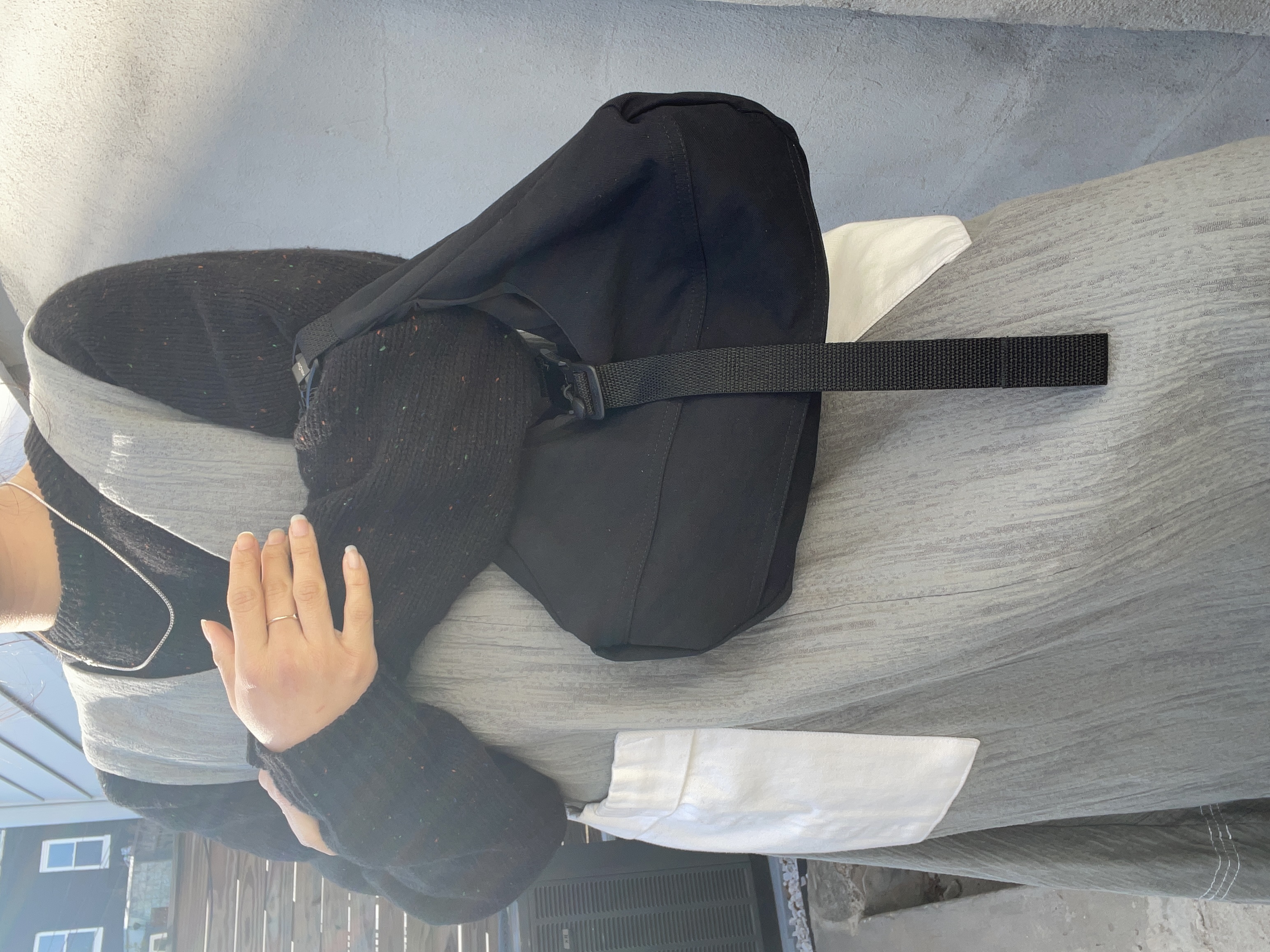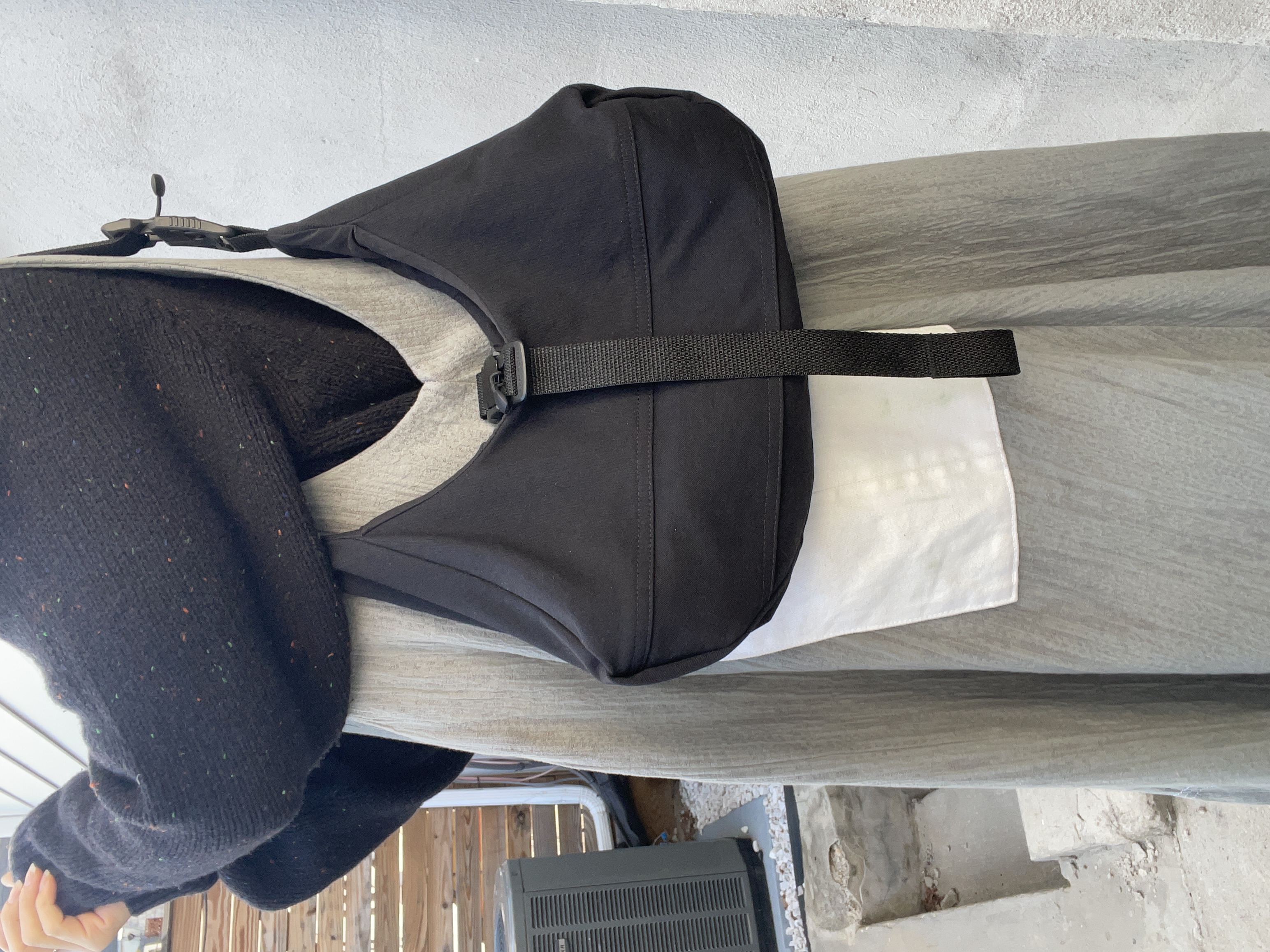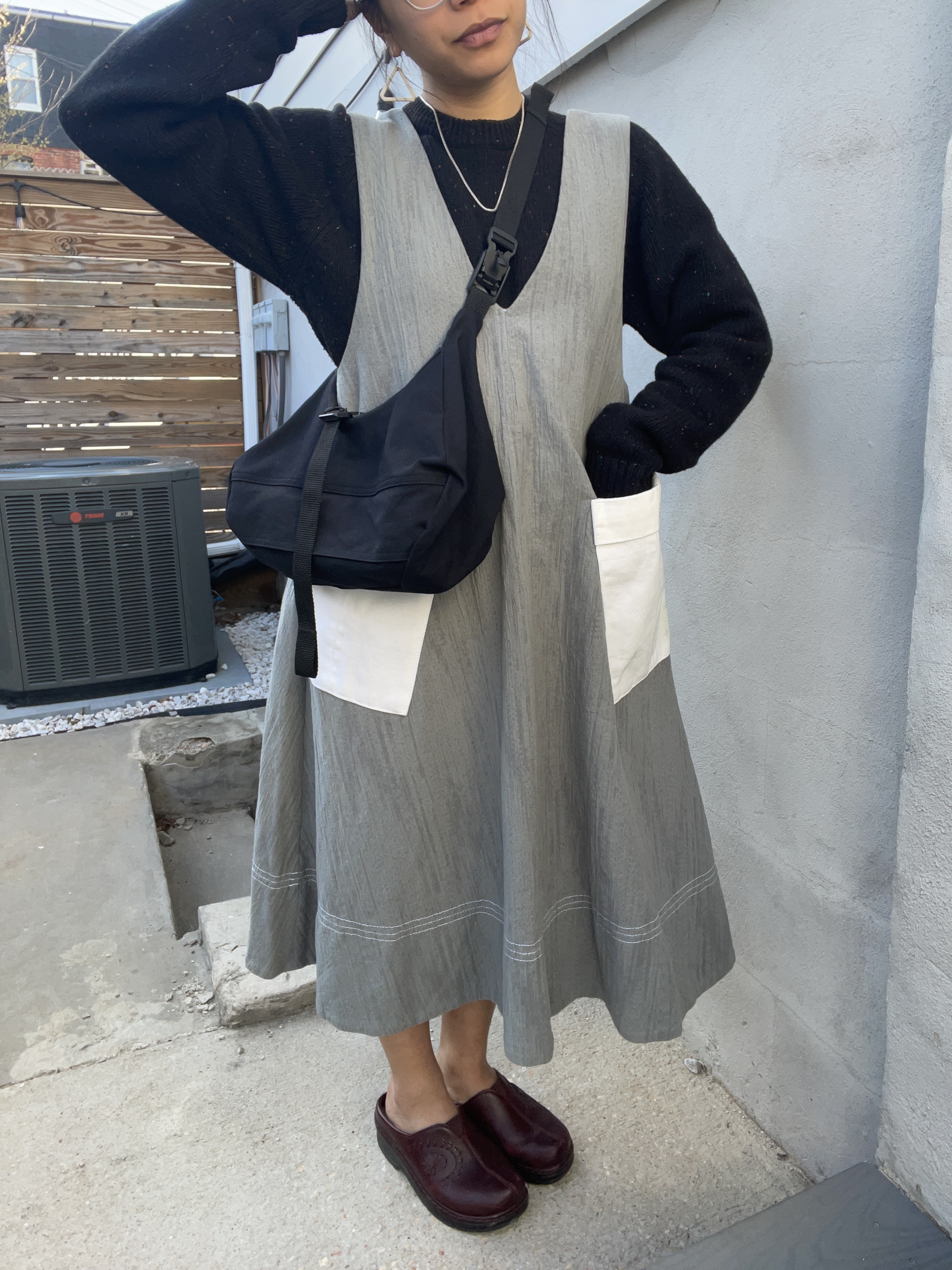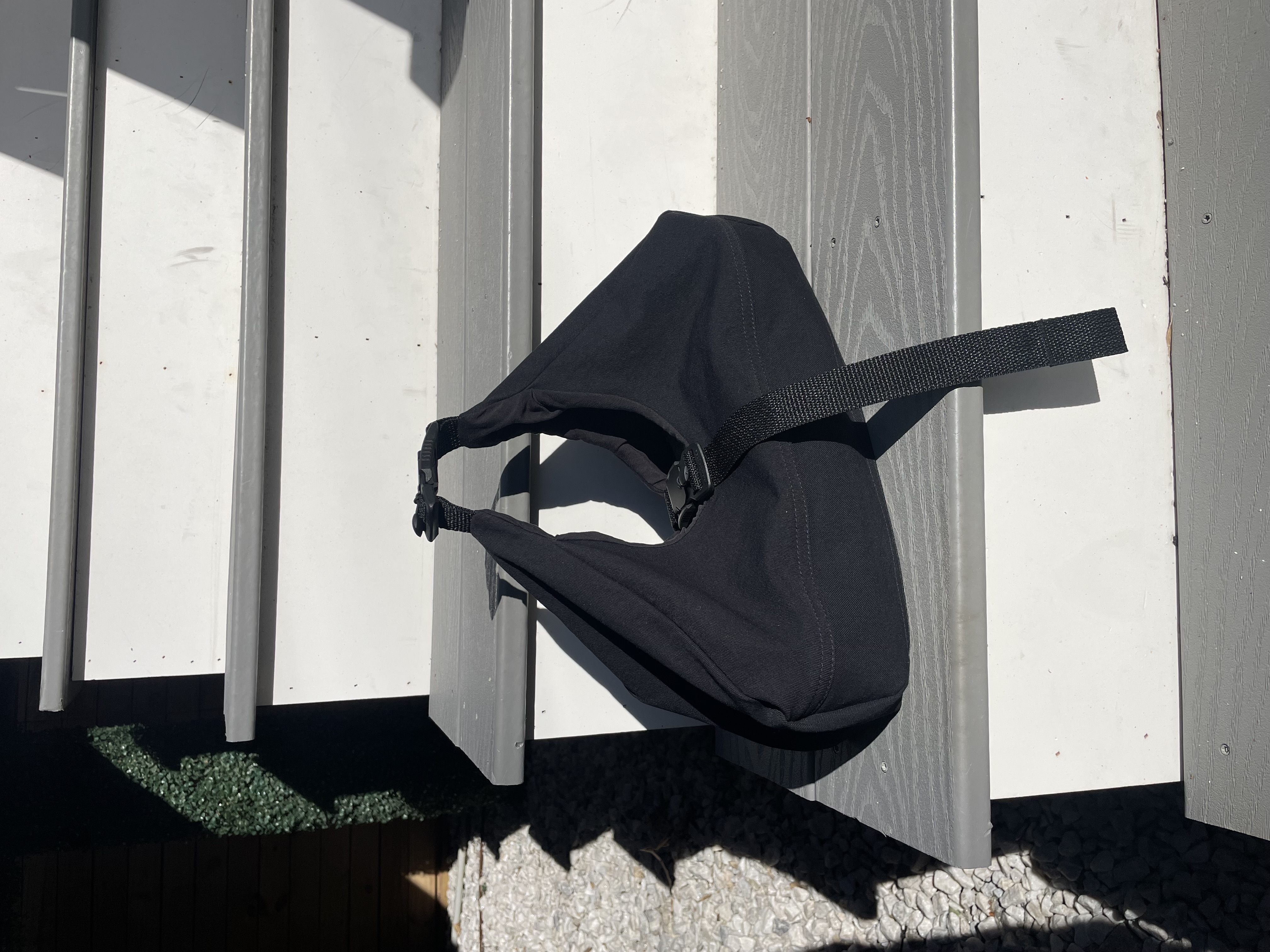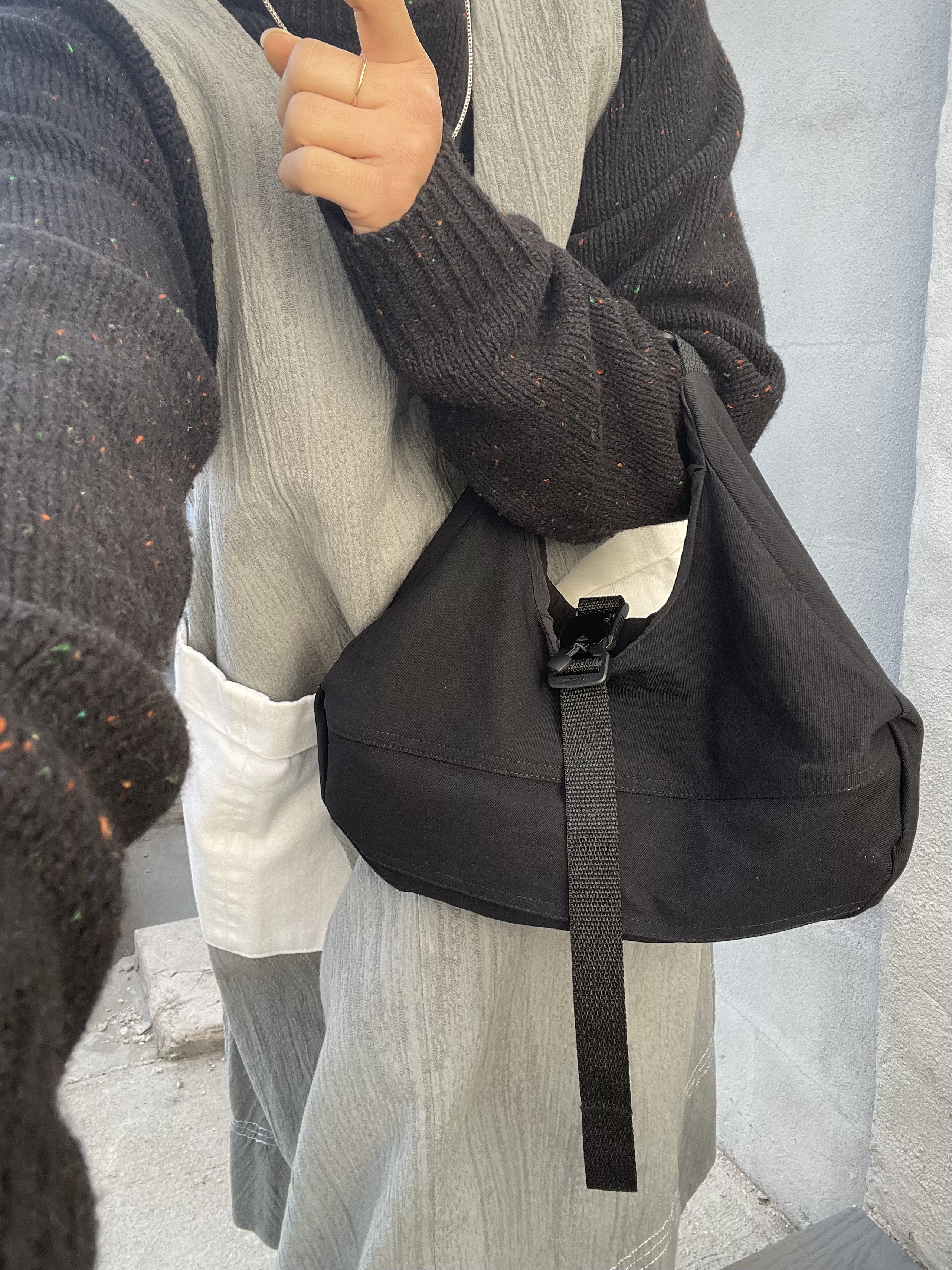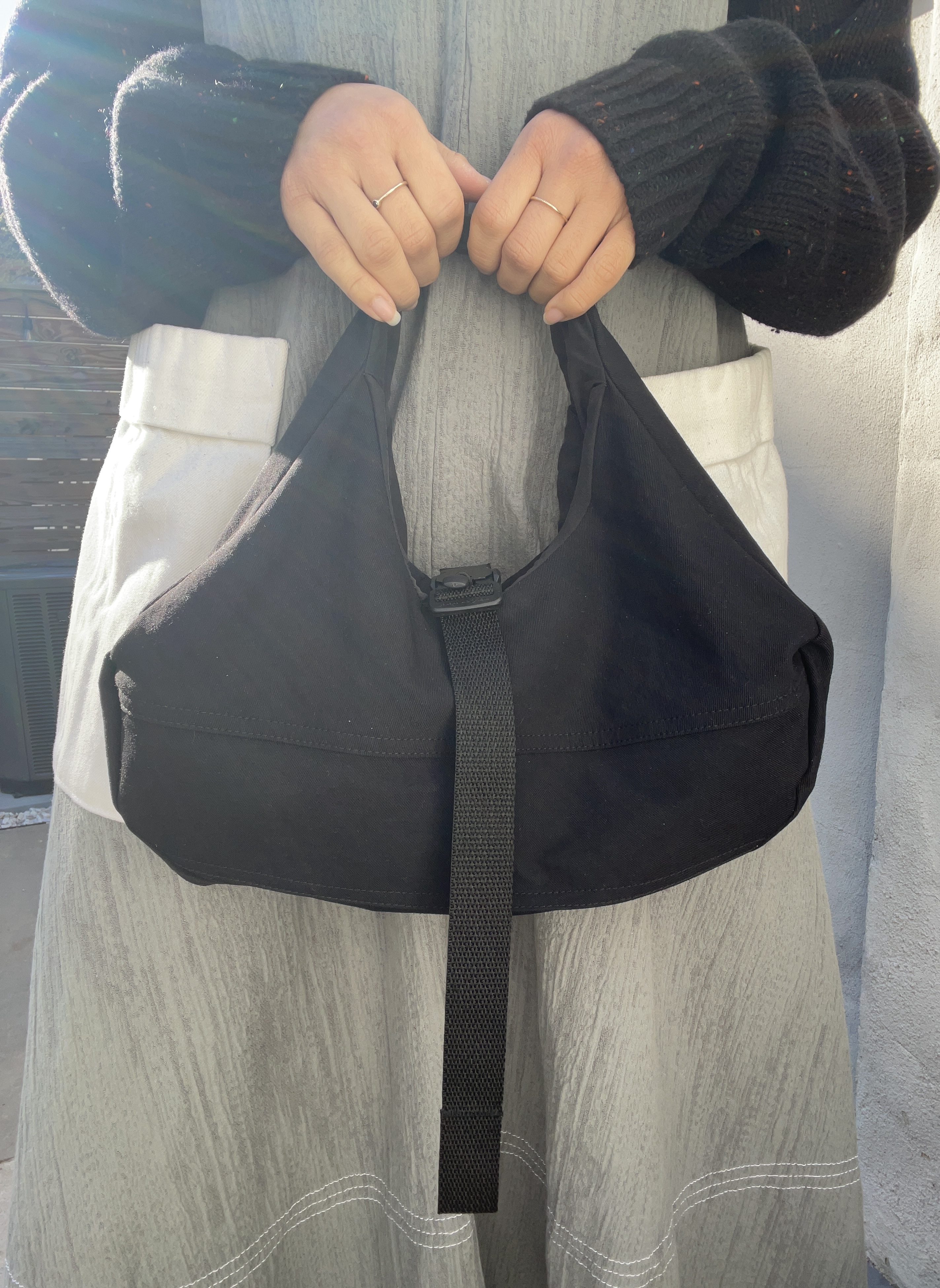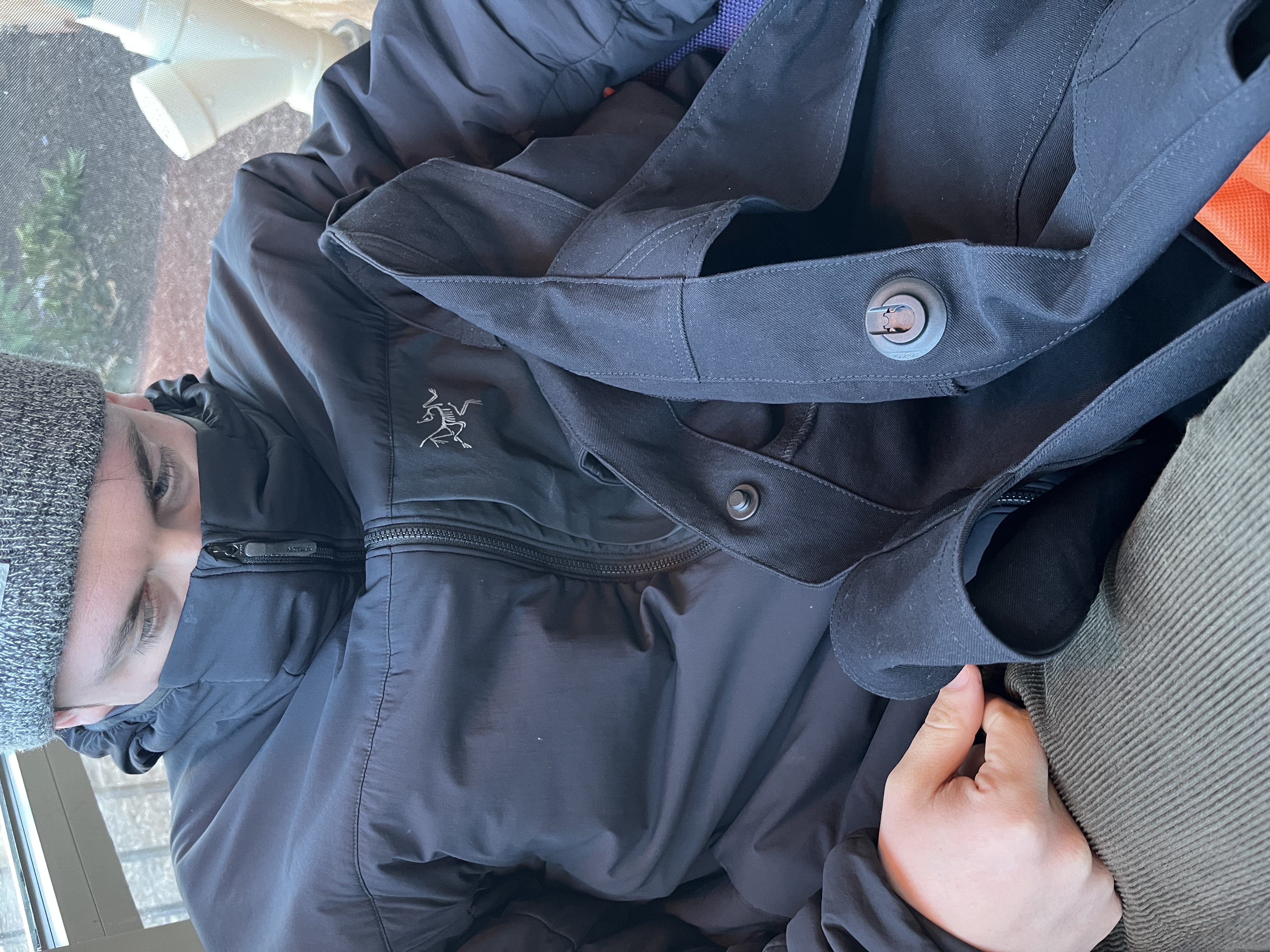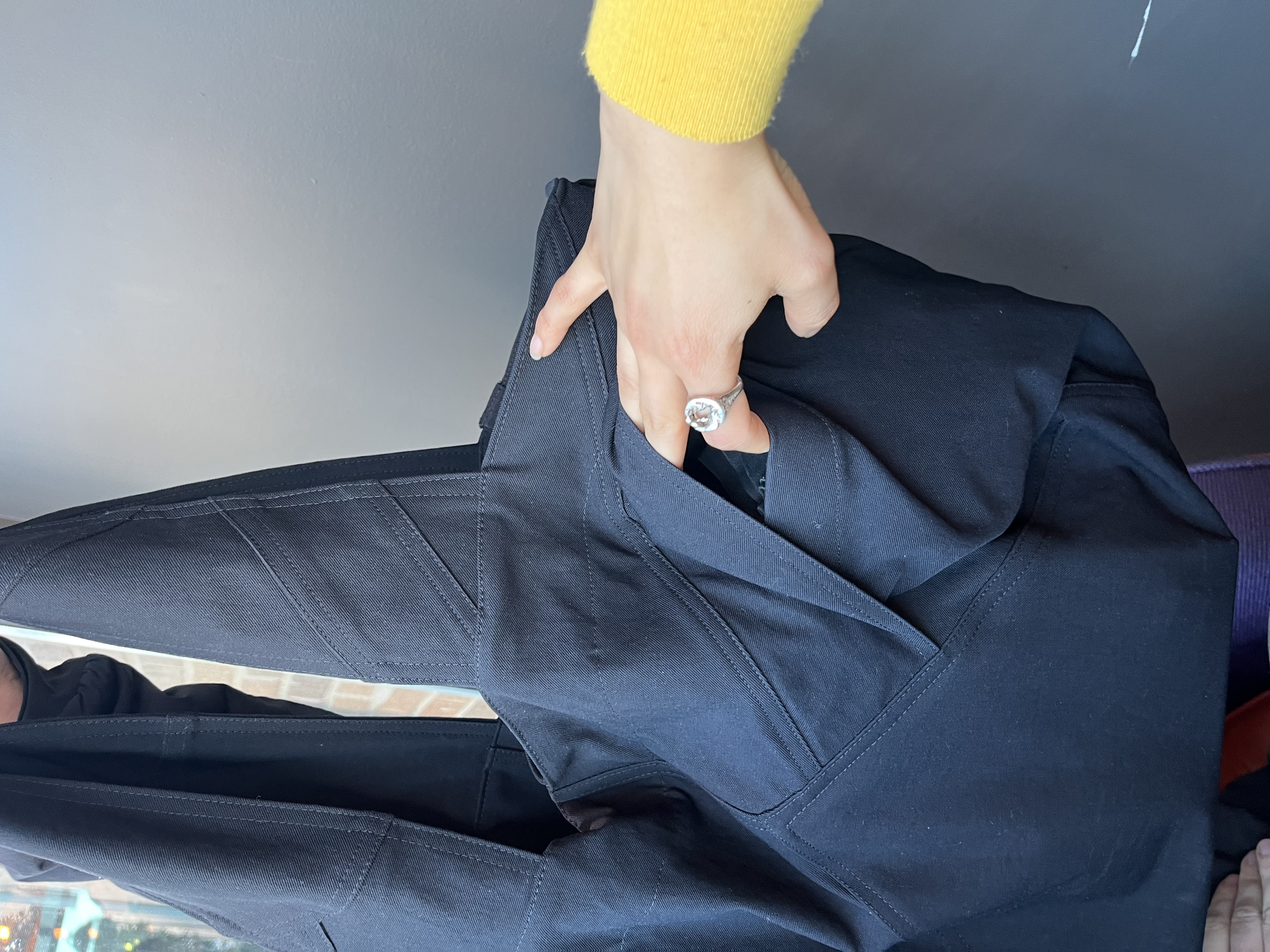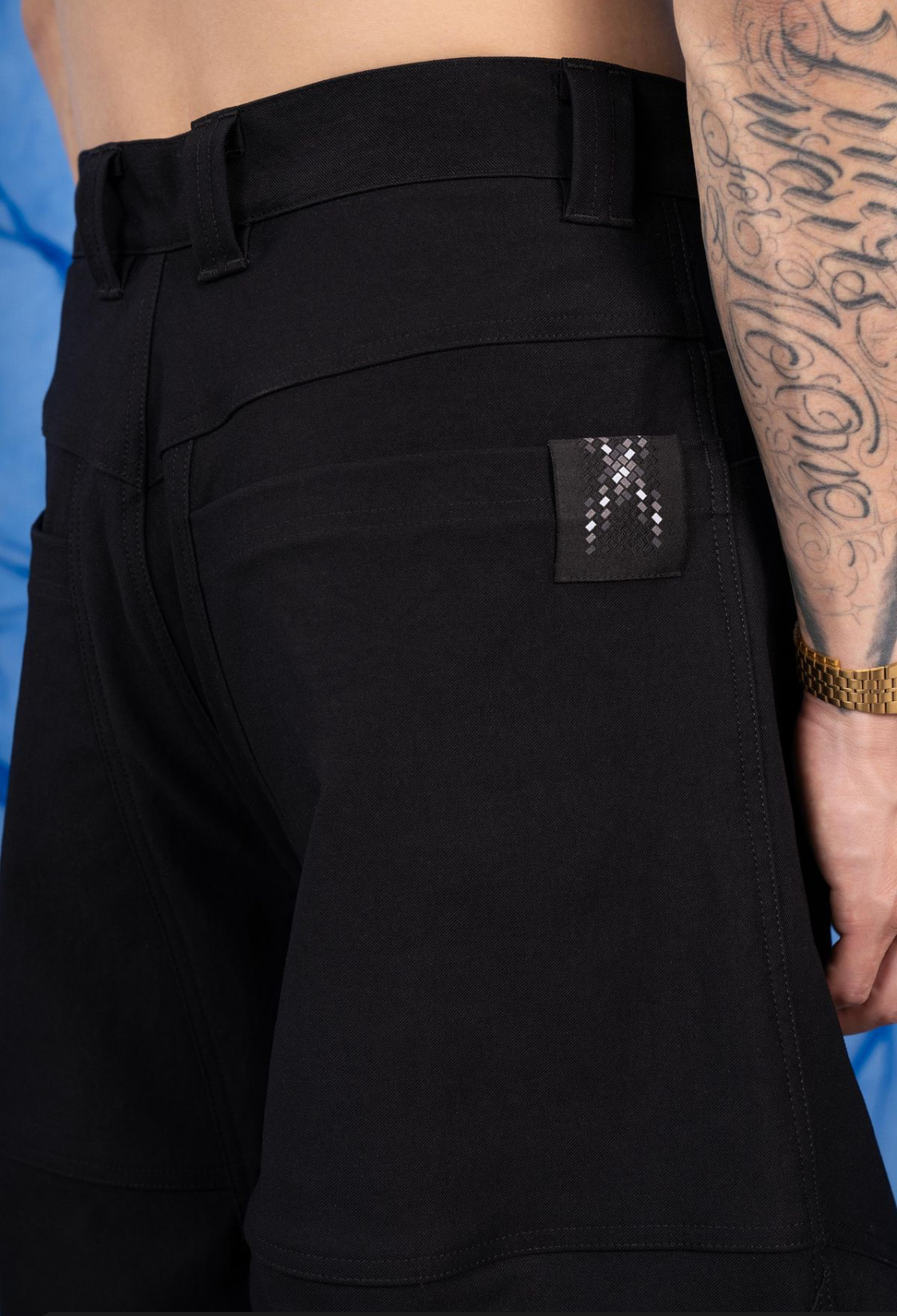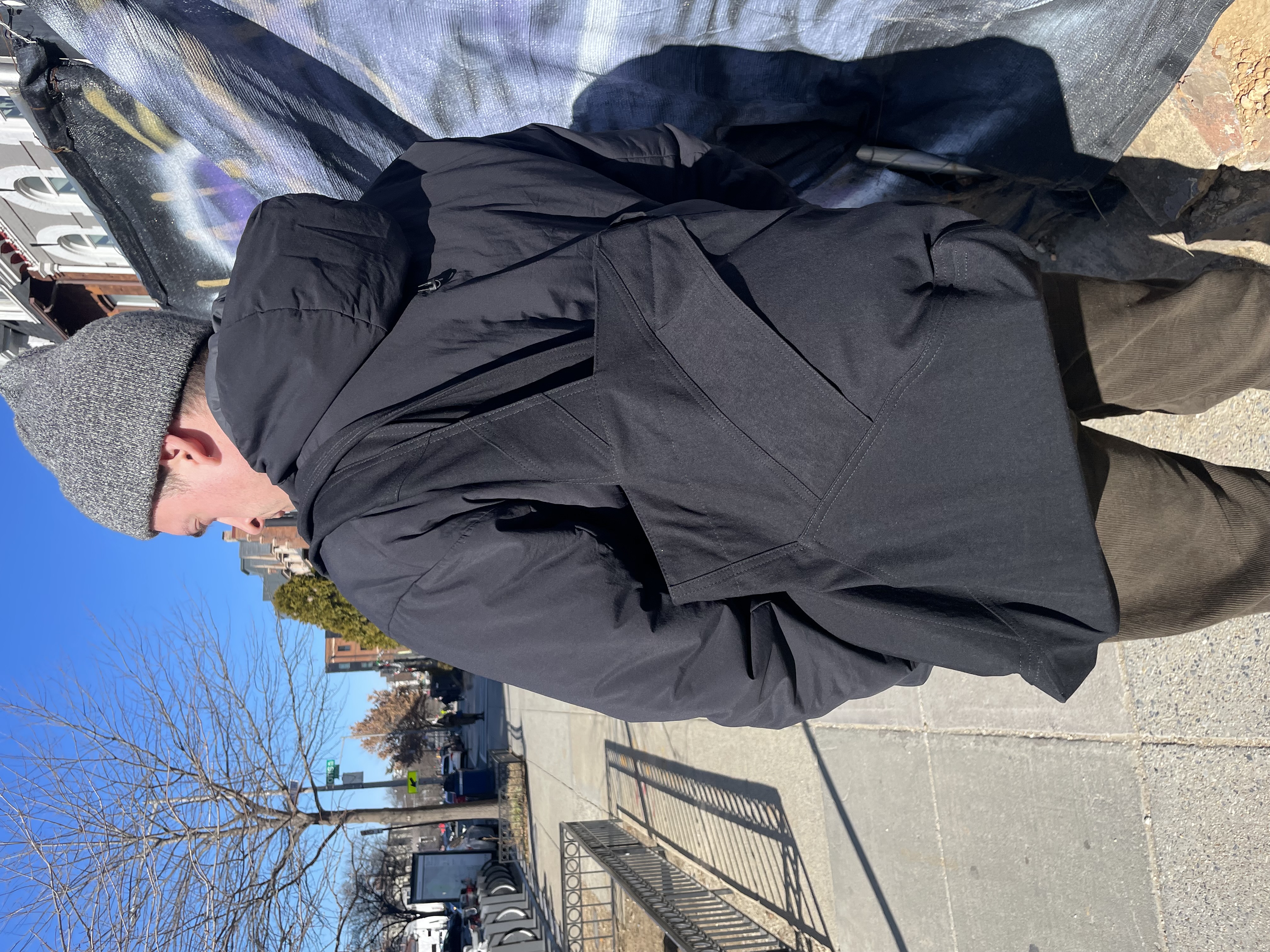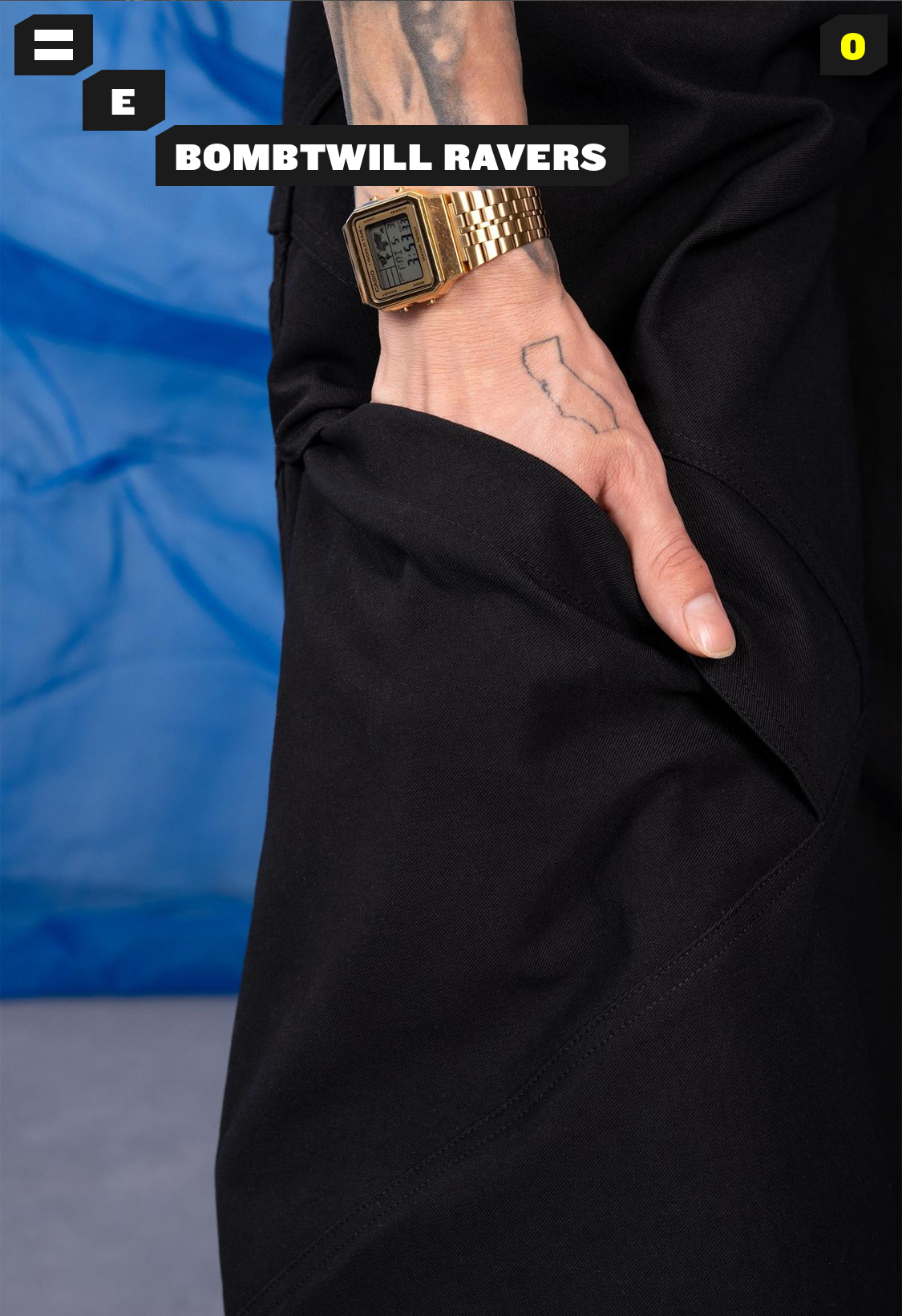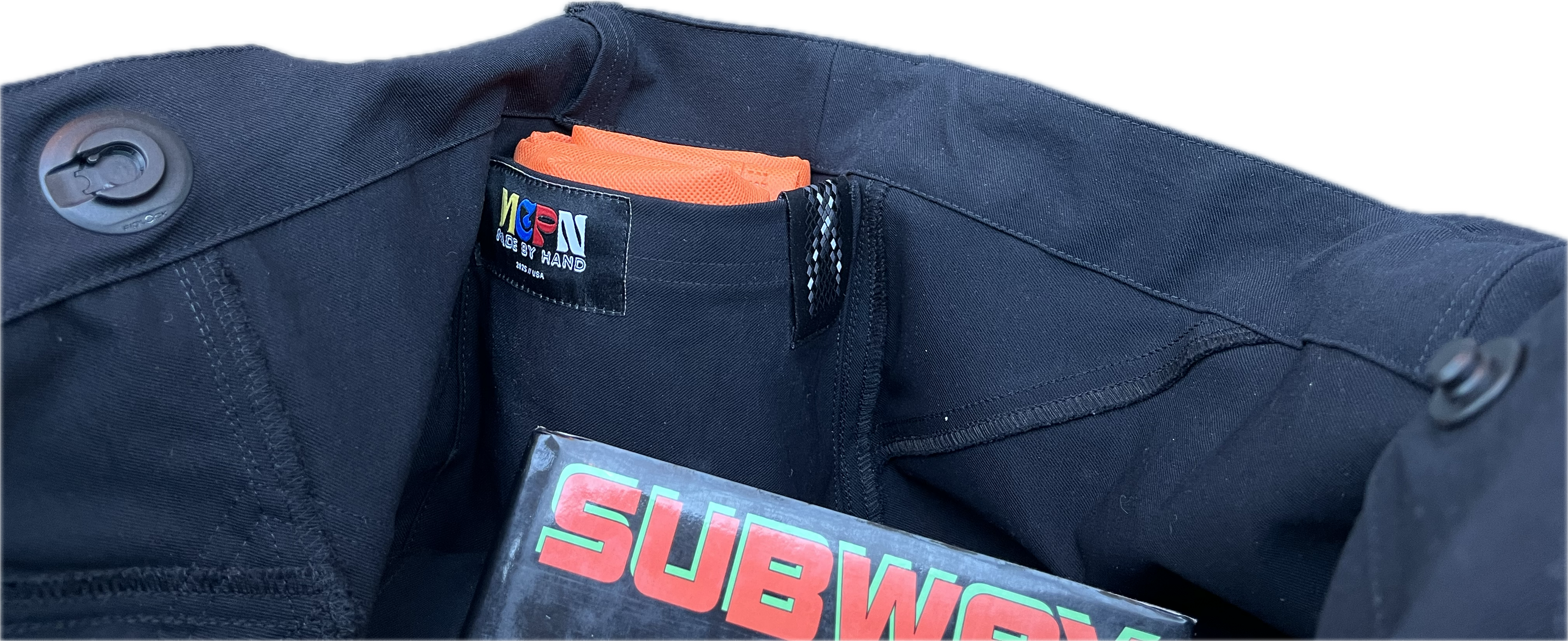Bombtwill Ravers 2.0: Tote & Purse
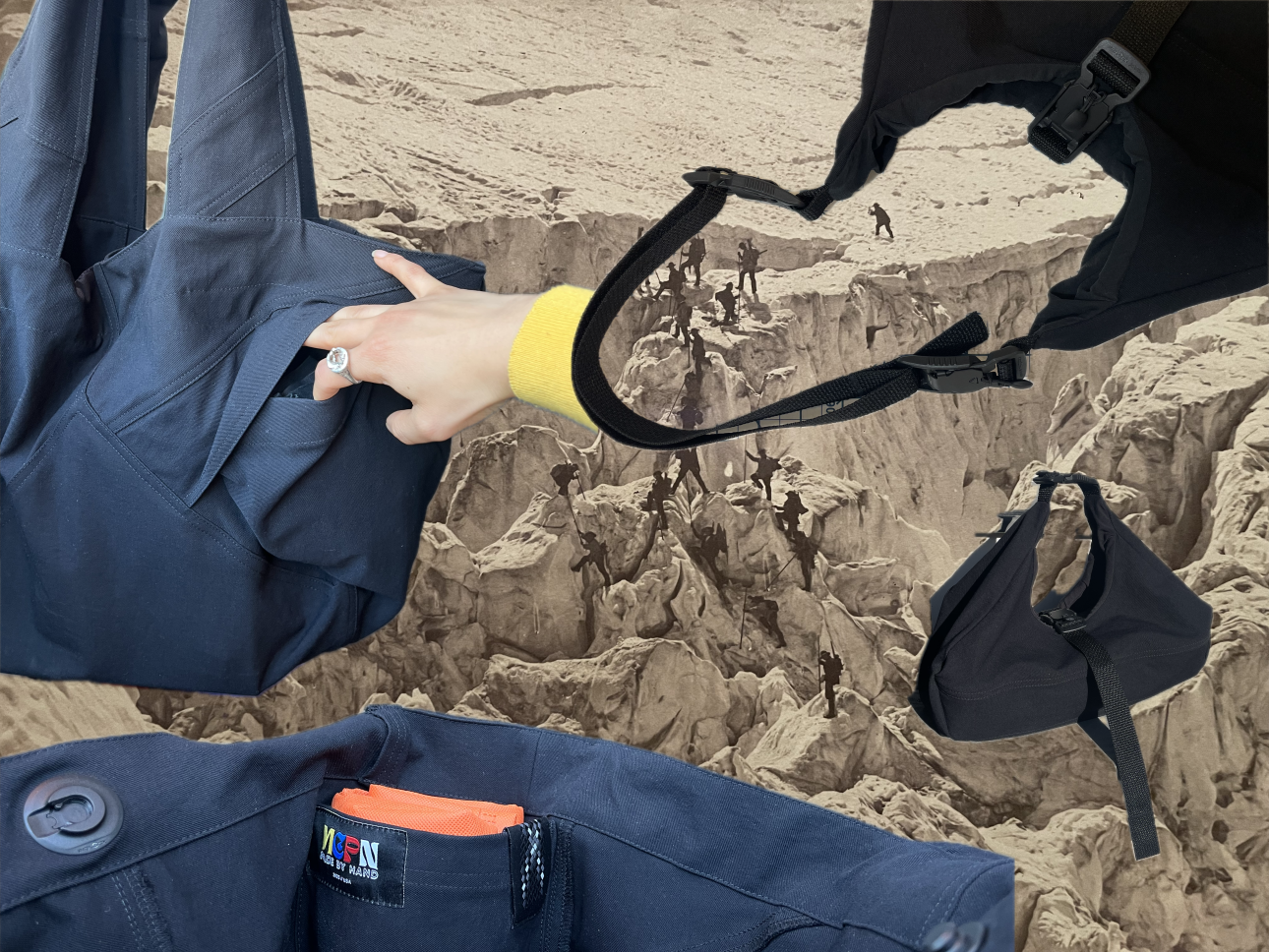
Before I started to learn real garment sewing, my first go at using my first sewing machine (quite literally a child's toy machine) was altering existing clothing and upcycling things I didn't wear anymore, circa 2020, during a time when thrift stores and in-person shopping was shut down.
The things I "made" from this period could be described as creative alterations, at best, or a Project Runway audition fail, at worst. I didn't understand things like grainline, how woven and knit garments differ in structure and drape, what edge finishing could be beyond pinking-shears-and-call-it-a-day. I cut up hemming offcuts and made patches out of them (still a good idea), and I seam-ripped apart my own garments with good bones (fabric) with idealist hopes to transform them into something amazing (also still a good idea, but far more ambitious and often never realized).
In the several years since then, I started sewing basic patterns (simpler shapes to cut and fewer construction steps) and graduated to more complicated patterns (things like burrito method, inserting finicky things like zippers and collars), often using deadstock fabric or upcycled/secondhand materials to make my makes even more unique.
Chasing even further uniqueness, I found myself often in tension between two directions: should I try to design my own patterns? Or should I keep trying new patterns to improve my technical skills, so that I can learn how patterns are designed, and one day make my own? Most of us know it's more of a chicken-and-egg problem/challenge. The average person cannot write a novel without reading some good ones first.
But this avenue of reading, learning, and making dozens of sewing patterns led me to another revelation (and pardon the analogy shift): in the same way following and mastering recipes doesn't make you a chef, but a cook who can produce something delicious to eat, following patterns doesn't make you a creative director of a fashion brand, but a sewist who can deeply understand how sewn wearable items are constructed, fit, and wear differently with various fabrics. You're not designing the recipe, but perfecting someone else's recipe to your own tastes and needs, and that is an entirely different creative process in itself.
For me, I particularly enjoy that creative process when my goal is to repurpose a previously made textile and give it a new life as something else. This is obviously easier with found materials like tablecloths or bedsheets (lots of free-reign yardage), less so with smaller linens (god I love tea towels but they're the never the right size or graphic placement for what I want to use them for), and even less so when deconstructing an existing sewn garment.
Enter these Outlier Bombtwill Ravers. Specifically, three pairs of them. After my partner, Will, received them in a sale mystery box, we decided to transform them into something a bit more functional. I ended up having enough in just one pair to make a Daughter Judy Kiki Weekender bag and a Puff and Pencil Hangaround Bag - both with a twist, of course. The pant's unique flap pockets both live on as functional pockets in each bag. The tote bag has an interior patch pocket that used to be the rear pant pocket. The old belt loops have become functional loops for affixing keychains (or a potential cross-body strap). Both bags have been elevated with Fidlock hardware, especially in the latter handbag. It can be worn three different ways, and the removable strap insertion is a bonus waist belt for me (I also sometimes use it to secure my pant leg while biking).
The most satisfying part to me is how polished both of these bags look. Thoughtful cutting, thread and stitch matching, and functional design went a long way in making these. 2020 me--who made her first mask by cutting up old t-shirts and knit skirts--walked so 2025 Maddie could run. And it's a long, long marathon.
